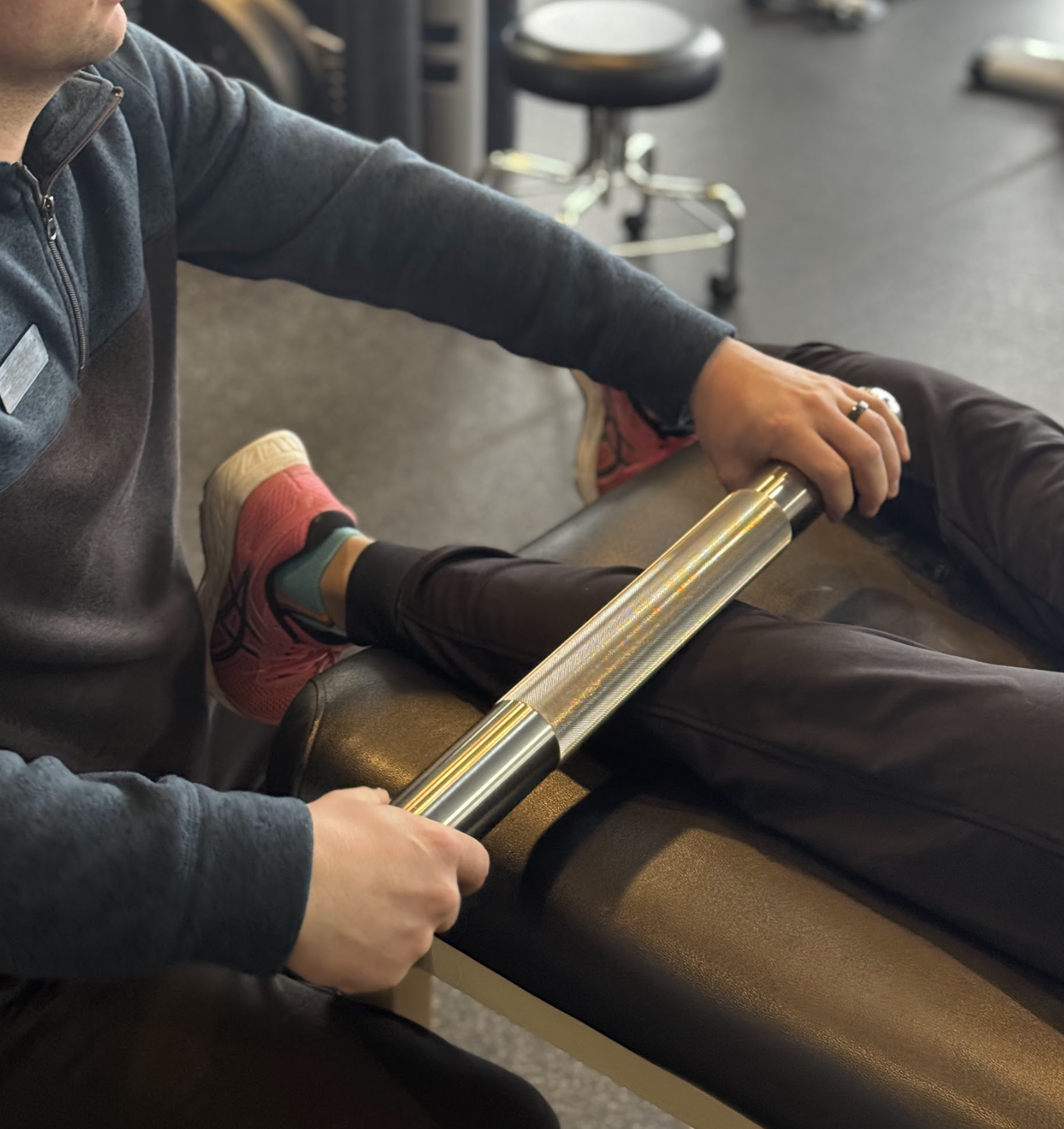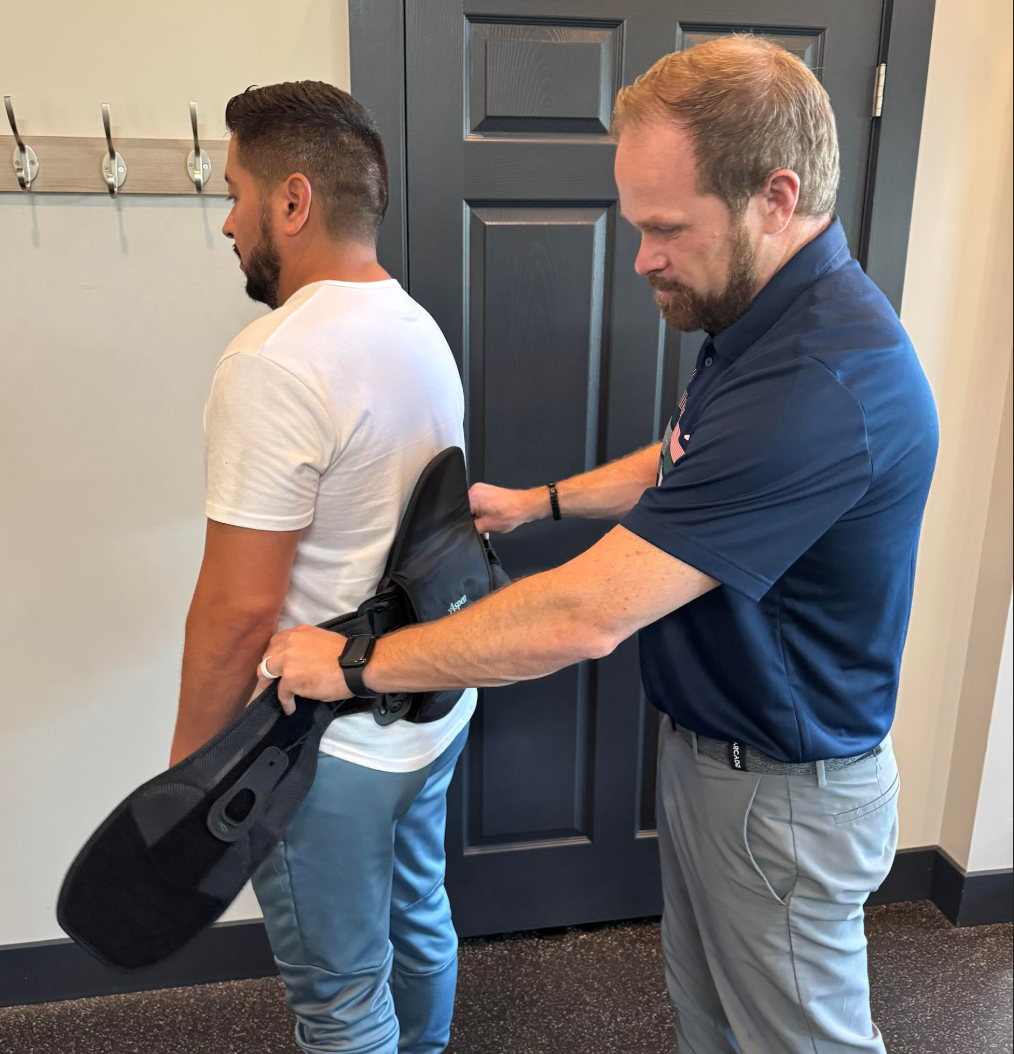Share this article:
Written by: Advanced Physical Medicine

Sciatica is a condition that occurs when the sciatic nerve is compressed, damaged, or injured. It is one of the most common nerve injuries, and people who have sciatica may experience a tingling sensation in their lower back, lower back pain, or numbness down the leg.
Generally speaking, sciatica is an incredibly common condition in adults over the age of 20. According to the Cleveland Clinic, about 40 percent of adults experience sciatica in some form throughout their lives. Given the fact that the sciatic nerve is one of the largest and most prominent nerves in the body, it's not surprising that sciatica can be caused by a variety of factors. The most common causes of sciatica include back and leg injuries, pregnancy, herniated disks, spinal stenosis, and osteoarthritis, among other causes.
The type of treatment that is required may vary based on the type of sciatica and its root cause, but many people find that physical therapy exercises for sciatica are incredibly effective. These exercises can not only offer immediate pain relief but also promote natural healing within the body.
These are some of the leading physical therapy exercises for sciatica pain:
1. Pelvic Tilts: A Simple Exercise for Lower Back Relief
Pelvic tilts are a simple and effective exercise that those who are suffering from sciatica pain can try in the comfort of their own homes. This exercise is designed to alleviate lower back pain and can help support sciatica recovery.
To perform a pelvic tilt, you should lie down and keep your knees bent while placing your arms at your side. Gently press your back into the floor tilt your pelvis forward, and hold this position for a few seconds. Rest, and repeat as needed.
2. Cat-Cow Stretch: Improve Spine Mobility and Ease Pain
The cat-cow stretch is a relaxing stretch that can help to improve spine mobility as well as alleviate back pain, all while allowing you to feel more relaxed and centered at the same time.
To perform this dynamic stretch, you will want to get on your hands and knees on the floor. Begin by getting into cat pose, which requires you to inhale while lowering your head and curving your back. When you exhale, bring your head forward and arch your back, as if you were a cow mooing in the pasture.
3. Knee to Chest Stretch: Alleviate Pressure on the Sciatic Nerve
The knee-to-chest stretch is considered to be one of the best physical therapy exercises for sciatica because it targets the buttocks as well as the lower back. It can help to quickly reduce pain and improve mobility.
To perform this stretch, you will begin on your back on the floor. Keep your knees bent and your feet flat on the ground. Once you are in position, you should bring your knee up to your chest and hold the position for 30 seconds. Be sure to keep your other foot rooted to the ground. Afterward, lower your knee and perform the stretch on the other side.
4. Seated Piriformis Stretch: Release Hip and Buttocks Tightness
The piriformis muscle is located deep in the buttocks, and it is often ignored as part of the regular stretching routine. By actively working on the seated piriformis stretch, you can relieve the pressure on your sciatic nerve and naturally begin to reduce pain and discomfort in that area.
You will need a chair to perform this stretch. After sitting on the chair, you will bring your ankle up and place it on your thigh. Flex your foot and sit up straight to maximize the stretch. Hold for a few seconds, and switch sides.
5. Bridge Exercise: Strengthen Core and Glutes to Relieve Sciatica
Performing a gluteal bridge exercise will help to strengthen your core, which can help prevent sciatic pain. If you are experiencing sciatica symptoms, this exercise can offer relief as well.
To complete the glute bridge exercise, lay flat on the floor with your feet on the ground and your knees bent. Lift your hips so that your shoulders are parallel with your knees, and hold the pose for a few seconds. Rest and repeat as needed.

6. Child’s Pose: Gentle Relief for Lower Back Pain
Known as one of the most relaxing and restorative stretches, child's pose is excellent for anyone who is suffering from lower back pain related to sciatica.
Begin this pose by sitting on your knees and bending forward. Keep your bottom tucked tight to your heels, and stretch your arms out in front. Your forehead should be on the floor. Breathe and stretch in this position for about 30 seconds in order to enjoy the full benefits.
7. Hamstring Stretch: Reduce Leg Tension and Improve Mobility
Sciatic pain often travels down the legs due to the location of the nerve. Hamstring stretches can release tension in the legs and also prevent future sciatica flare-ups.
One of the most common hamstring stretches requires you to stand tall with one heel propped on the ground. Gently bend forward and use your hands to make a scooping motion. Repeat this motion several times, and then stretch the other leg.
8. Standing Quad Stretch: Stretching the Front of the Leg for Pain Relief
The standing quad stretch targets the quadriceps muscles in the legs, and this stretch can help minimize both leg pain and back pain associated with sciatica.
This simple stretch can be performed in the standing position. While standing with your feet shoulder-width apart, bend one knee back and gently grasp your foot. Use your foot to lengthen the stretch and hold this position for about 30 seconds.
When to Seek Help: Signs You Need Professional Treatment
Sciatic pain can feel like a persistent burning, or it can feel like a shock to the lower back or legs. It often lingers, typically because it is the result of nerve damage or injury. If you have been suffering from sciatica symptoms, it may be time to consider working with a physical therapist.
At Advanced Physical Medicine of St. Charles, we offer personalized physical therapy treatment services. Our trained and certified providers work closely with all clients to alleviate pain, improve mobility, and promote natural healing. The best way to heal from sciatica is to work with physical therapists who can address the root cause of your condition and provide you with a personalized exercise plan.
Request an appointment at Advanced Physical Medicine of St. Charles today.
Connect with Us:











